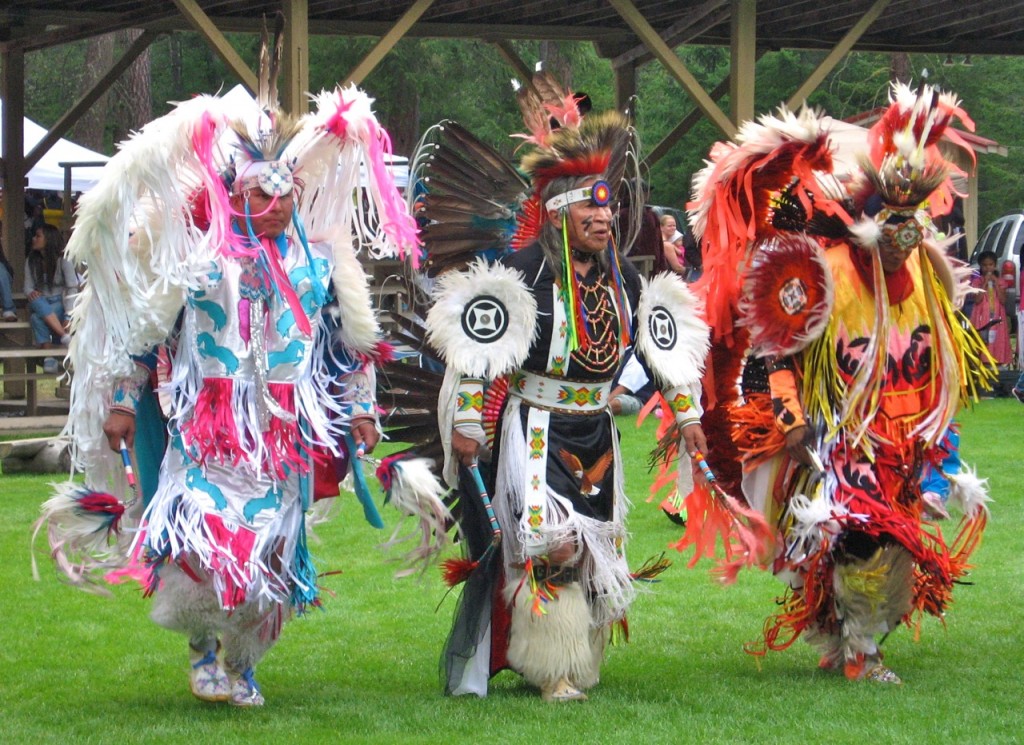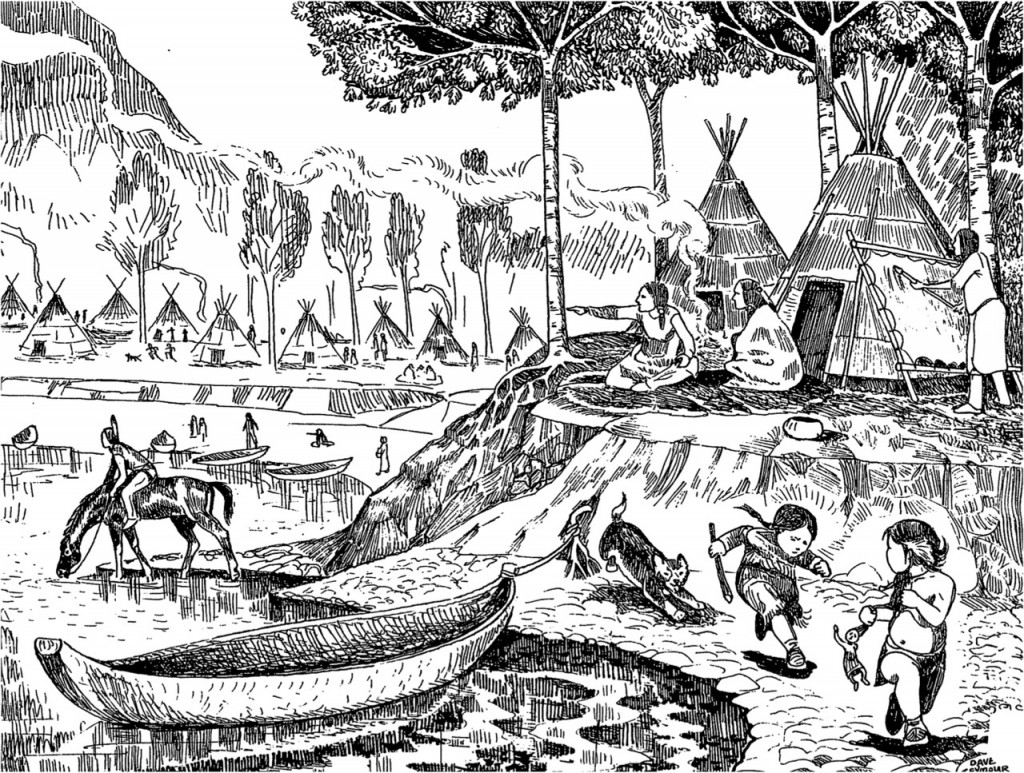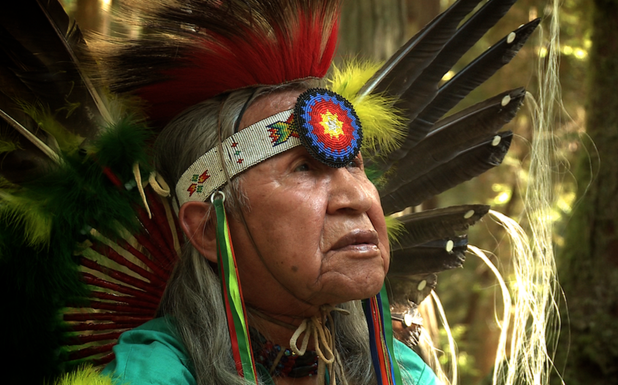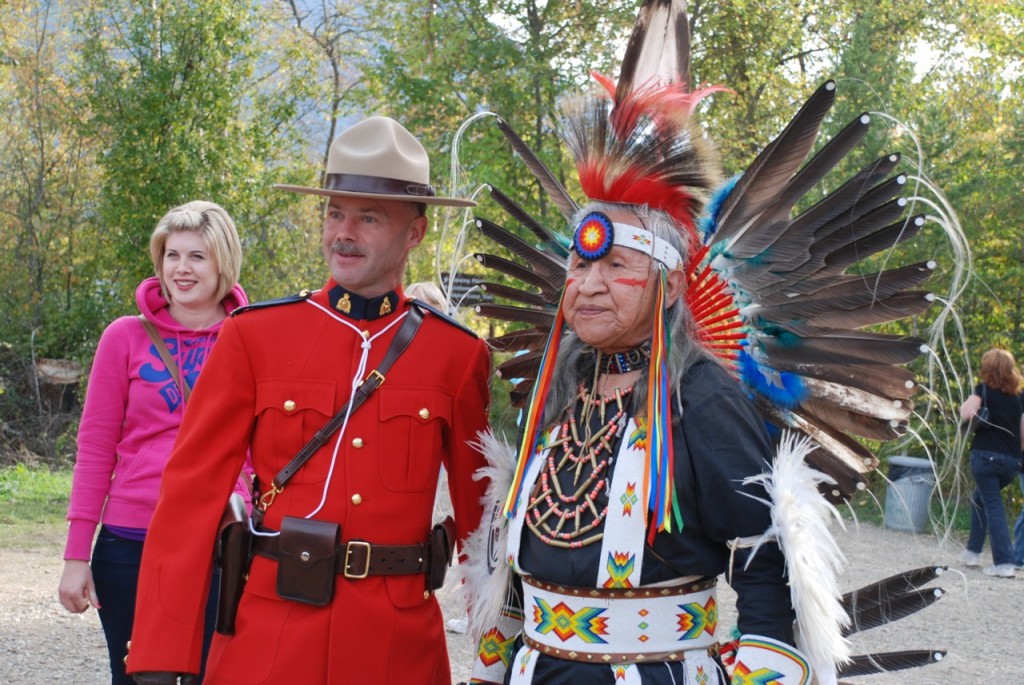His smile is infectious, his spirit boundless, and he offers warmth and friendship to everyone he meets. Legendary dancer, Ernie Philip was born in Tappen in 1930, lived on the coast and returned home in 1989, where he continues to live today. Over his lifetime, he has earned countless awards, danced in countries around the world, worked in film and TV, and inspired many First Nation youth to take more pride in their ancient culture.
It is possible that one could trace Ernie’s success back to the skills and knowledge he gained from his grandfather, who raised him until the age of 8 when he was hauled off to residential school in a cattle truck. Unable to speak English, he was slapped and strapped every time he was caught speaking Secwepemctsin.

As soon as he could leave the school at age 16, Ernie worked at many different jobs, including logging, farming, mining, in factories, and on the railway. But the residential school had taught him to despise his own people and in turn, he hated white people. He began to drink and one day nearly committed suicide on the train tracks where some of his relatives had died.
At one time, First Nation dancing was illegal and only occurred inside homes behind covered windows. But in 1951, the law was scrapped and Ernie was asked to join others in a parade in Kamloops dressed in regalia and encouraged to dance. He began to dance more often, beginning with traditional Secwepemc dances including some that he had learned from his grandfather wearing regalia he made by hand.
Ernie travelled to Oklahoma, where he learned new dancing styles from elders and adopted their brightly coloured regalia. It was there he earned the right to do feather dancing, eventually getting permission by Chief Mac Whitehorse.

But drinking remained a problem and in 1963 he checked into a halfway house where he fell in love with a young employee of Irish and French ancestry, Yvonne. After following her supervisor’s requirement that he stay dry for a year, they married and he never drank again. Ernie’s success is due in part to their teamwork, as Yvonne took on the task of creating his regalia.

Ernie (centre) dancing at the 2007 Squilax Pow Wow
Dancing became Ernie’s passion and as he racked up Grand Champion Fancy Dancer awards year after year, he was hired to perform in schools, and for large audiences across North America, Europe, and Asia. In Australia and New Zealand, he met with local Indigenous communities. At home, he helped organize Pow Wows in Mission, Kamloops and Chase.
Ernie believes dancing has made him strong because for him it is about love and respect. And he loves any kind of dancing and the people who dance. He explains, “I believe that our art, our song, our dance, is the mirror we look into – to see who we are.” And he stresses, “…these songs and these dances, they have been here for thousands of years.”

Illustration by David Seymour, courtesy of the Secwepemc Museum & Archives
A deeply spiritual man and a true humanitarian, Ernie has developed a strong sense of his own identity. “I dance with my people, I know who I am. I respect who I am. Because I respect who I am…I know how to respect you.” His journey from the depths of despair to the heights of success speaks to the powerful inherent spirit of Indigenous culture.

Image from the film, Dancing Bear
Now at the age of 86, Ernie continues to dance and so do his three children. A proud member of the Little Shuswap Lake Indian Band, he served for years as an ambassador for the famed Quaaout Resort and Conference Centre.
In 2010, a former co-worker, Brian Sumner, saw Ernie dance and heard his stories about the residential school. He offered to help apply for a grant to produce a short film about reconciliation in the context of Ernie’s life. Two filmmakers joined the team and a full-length documentary, Dancing Bear, was produced and is now awaiting distribution. One day, hopefully soon, the film directed by Ben Ged Low, will screen in the Shuswap.
POSTSCRIPT
All the quotes from Ernie are from the film, Dancing Bear. You can learn more about the film from this website: http://dancingbear.info/index.html
I interviewed Ernie at his home for this column. He has told his story many, many times, so the his words flowed freely. Ernie lent me some of the news clippings about his dancing and achievements. Unfortunately, most of his prized possessions were lost in a house fire some years ago.
From one of the newspaper articles, I learned how the Pow Wow is more than a competition, it is a celebration of First Nation identity. Pow Wow comes from an old Algongquin word for medicine man, which means “he dreams.”
Ernie is truly a very special person who exudes love and friendship and the Shuswap is a better place because of his contributions.








